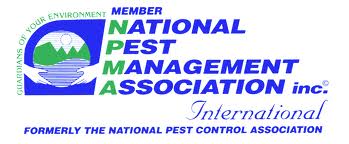
Recently, the National Pest Management Association (NPMA) released an Executive Summary of the 2011 Bugs Without Borders Survey. Completed this summer, the NPMA and the University of Kentucky surveyed a nationwide sample of pest management professionals. We are pleased to share an executive summary, featuring the latest findings about the growing bed bug resurgence and referencing data from the 2010 Bugs Without Borders survey for year-over-year comparisons. This report highlights the key findings obtained from more than 400 pest management professionals who participated in this survey. A full report of the findings of the survey will be presented at PestWorld 2011 and shared in the November/December issue of PestWorld.
Some notes from the Executive Summary that BBFS found especially interesting:
Here are several key highlights from the 2011 Bugs Without Borders Survey:
| 1. | Nearly all professional pest management companies have received bed bug calls in the past year. Respondents attribute the growth in bed bug infestations to increasing travel and movement of people, continued need for awareness, changing pest control products and methods, and bed bug resistance to available pest control products. | |
| 2. | While nine out of ten respondents have treated bed bugs in apartments, condominiums and single-family homes in 2011 and 2010, in the past year reports of bed bug encounters have become more common in a many other places. For example, the numbers of professionals who treated college dorms, hotels, nursing homes, office buildings, schools and daycare centers, hospitals, public transportation and movie theaters for bed bugs have all increased compared to last year. More specifically: | |
| • College dorms (54 percent, up from 35 percent a year ago) | ||
| • Hotels/motels (80 percent, up from 67 percent) | ||
| • Nursing homes (46 percent, up from 25 percent) | ||
| • Office buildings (38 percent, up from 18 percent) | ||
| • Schools and day care centers (36 percent, up from 10 percent) | ||
| • Hospitals (31 percent, up from 12 percent) | ||
| • Transportation (train/bus/taxi) (18 percent up from nine percent) | ||
| • Movie theaters (17 percent, up from five percent) | ||
| NOTE: Percentages denote professionals reporting treating bed bugs in specific locations and percentage increases from 2010. | ||
| Survey respondents also report finding bed bugs in retail stores, laundromats, libraries, restaurants and airplanes. | ||
| 3. | Bed bugs continue to be THE most difficult pest to treat, according to 73 percent of survey respondents. By comparison, 17 percent pointed to ants, nine percent said cockroaches and one percent said termites were the most difficult pests to control. | |
| 4. | Six out of 10 respondents consider bed bug infestations a year-round phenomenon, while approximately 25 percent say that summer is the time of year when they receive more bed bug calls. As people tend to travel more during the summer months it may be likely they’ll have a higher risk of taking hitchhiking bed bugs with them from hotels and transportation sources to homes more so than at other times of the year. | |
| 5. | When it comes to evaluation and treatment, visual inspection remains the most common method pest professionals use to determine if a bed bug infestation exists. However, the use of canines has grown from 16 percent to 43 percent in the past year. | |
| 6. | Despite the many warnings that bed bugs are not a DIY pest, 25 percent of customers attempt to treat bed bug infestations by themselves before calling a professional. This number has decreased from the 38 percent who elected to treat bed bugs by themselves in 2010. Those who attempt to treat bed bug infestations by themselves often engage in dangerous and risky DIY practices putting themselves and their property at risk and are often ineffective at controlling the infestation. | |
Bed bugs are the size and color of a flat apple seed, like to travel and will hide in suitcases, boxes and shoes to be near a food supply (humans). In addition to the mattress and headboard, bed bugs can be found behind baseboards, electrical switch plates, picture frames, wallpaper, upholstery and in furniture crevices.
More information can be found at AllThingsBedBugs.org, NPMA’s resource on everything bed bug related, from prevention tips to current news.
The NPMA, a non-profit organization with more than 7,000 members, was established in 1933 to support the pest management industry’s commitment to the protection of public health, food and property. For more information, visit PestWorld.org.
Download a copy of the NPMA 2011Bugs Without Borders Survey – Exec Summary
Contacts
National Pest Management Association
Missy Henriksen, 703-352-6762
[email protected]
or
Vault Communications, Inc.
Ela Voluck, 610-455-2752
[email protected]
In other news, Vikane (Sulfuryl Flouride) Fumigation is 100% effective against all life stages of the pesky bed bug, including the hard to control egg stage. One single fumigation treatment to a structure and/or its belongings can eradicate the source population, prevent any pesticide resistant generations from continuing to unnaturally evolve, and make future preventative measures (such as a defined Integrated Pest Management program). DOW Vikane Fumigation is the only 100% effective eradication method for all stages of bug infestation that leaves no detectable residue.
Bed Bug Fumigation Specialists (BBFS) is the industry leading Vikane Fumigation Treatment Service specializing in bed bugs, termites, clothes moths, powder post beetles and other pest infestations. With over 40 years of collective fumigation experience, BBFS is the company with the record you can count on. Our professionals have safely completed more than 50,000 fumigations in our history, including over 2500 successful bed bug eradications in NYC alone. BBFS is also a recipient of DOW AgroSciences Commitment to Excellence (CTE) award for safely administering Vikane for thousands of customers.